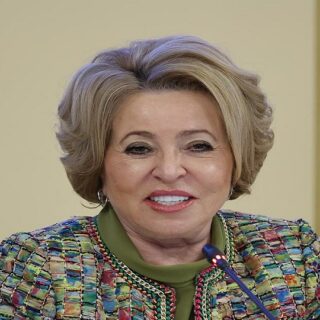
Tsar Nicholas II has received many contradictory interpretations. Popular publications in Russia today often idealize him and regard him as a martyr betrayed and killed by his own people.
Tsar Nicholas II and his family are considered saints by the Russian Orthodox Church.
However, the last tsar of the Russian Empire had a very different public image during his reign from 1894 to 1917. Many people in Russia, Europe, and North American regarded Nicholas II as a crowned executioner who conducted a reign of terror against his own population, particularly during the suppression of the Russian Revolution of 1905-1907.
One of the most difficult questions in studying the history of the post-reform Russian Empire between 1861-1917 is assessing the government’s police and repressive systems. The empire was not a police state practicing unrestrained white terror against its opponents despite what liberals, socialists, and many historians have argued. Nor was it a benevolent state ruled by saint-like tsars as post-Soviet Russian nationalist historians and publicists now suggest. Nor was the government the victim of a conspiracy of internal and external enemies as many publicists and conspiracy theorists in Russia today insist.
The Russian government’s police and repressive policies were very complex. Its severe policies toward political opponents often antagonized members of educated society. However, the government could not become a police state because it lacked both the resources and political will to become one.
The massiveness of government violence and repression in suppressing violence in the Revolution of 1905-1907 cannot be questioned. This article will give a statistical portrait of government repression. Previous articles have given statistics about the massiveness of terrorist violence, the violence of mass protest movements, and criminal violence.
Any study of government repression in Russia must be set within the wider European historical context. All European governments, starting especially with the French Revolution, faced challenges to their authority and developed police systems, formulated concepts of political crimes or crimes against the state, repressive policies against real or imagined political opponents.
By using a European-wide context, we can see elements of similarity and difference between Russia and European countries. We have already seen how political terrorism in the Russian Empire differed sharply from European terrorism by its massiveness and continuity. The violence of mass protest movements and criminal violence had similarities with European countries. When examining government repression, the wider European context can help us avoid stereotypes of <<Russian despotism>> and understand the complexities of Russian government policies.
Furthermore, the Russian government’s response to different types of violence is relevant today when we look at government wars against terrorism and other types of political violence and attempts to end the radicalization process that transforms people into terrorists.
I do not engage in idealizing or demonizing the government, terrorism, mass protest movements, political parties and movements in pre-revolutionary Russia. What matters the most is that we understand the complexities of pre-revolutionary Russia and determine why these complexities are still relevant today.
A Comparison of Two Revolutions
We have statistics for the massiveness of government repression in the French Revolution of 1789-1804 and the Russian Revolution of 1905-1907. Historians still argue about the place of the Jacobin Reign of Terror from 1793-1794 in the history of the revolution. Many historians regard the Jacobin terror as an aberration and suggested that the Jacobins were forced to resort to terror due to foreign military interventions and internal counterrevolutions. Other historians suggest that the intolerant mentality of the revolutionaries of 1789 made the terror a logical step.
British historian Richard Doyle gave the following statistics of Jacobin repression. Tribunals and other government organs executed 16,000 people while another 16,000 were killed in unofficial executions. Committees and tribunals imprisoned 500,000 people of whom 10,000 died in prison. Another 250,000 men, women, and children were killed by the army in the suppression of the royalist rebellion in the Vendée region from 1793-1796. [1, pp. 253-159]. In 1796, General Lazare Hoche reported to the government that 600,000 rebels and French soldiers had been killed in the rebellion. [2, p. 199]
Note that France had a population of 28 million people in 1789. The first Russian census of 1897 recorded a population of 125, 640, 021. [3] The level of repression undoubtedly affected a huge number of the French population. In fact, Jacobin terror was only one type of violence during the revolution. Violence from below took place during the so-called peaceful period of the revolution from 1789-1792. Government terror and violence from below continued for years after the overthrow of the Jacobins in July 1794. The varieties of violence in the French Revolution will be examined in a future article so that readers may make comparisons between the French Revolution and the Revolution of 1905-1907.
Russian Government Repression
The first years of the reign of Nicholas II witnessed growing numbers of people accused of political crimes—both state crimes and crimes against the form of government. P. N. Miliukov, a future leader of the Constitutional Democratic Party (Kadets) noted on a lecture tour in the United States in 1903 that between 1894-1903 20, 384 people had been accused of state crimes. Miliukov told his audiences <<Public opinion considers that a political crime is not a crime. To be branded by the police as a political criminal is a mark of distinction. >> [4, pp. 516-517] No political trials took place in Russian civilian courts between 1894-1901, but administrative bodies could punish people without trial in political cases. The usual administrative punishments were exile or police surveillance.
The government used a combination of judicial, administrative, and military measures to crush the revolution. Note that terrorists made up a minority of those arrested, tried and punished.
The army conducted punitive expeditions, particularly in Siberia and the Baltic provinces and killed thousands.
Between 1905-1913, civilian courts tried the cases of 33,363 people accused of state crimes, while military courts handled the cases of 26,067 accused. Defendants were usually accused of rebellion, belonging to illegal organizations, distributing seditious publications, etc. Military courts sentenced 3,293 people to death. Administrative organs sentenced 32,981 people without trial to exile between 1906-1908. After SR Maximalists attempted to assassinate Prime Minister Stolypin on August 12, 1906, the government established field courts-martial which used a speeded-up procedure. In eight months, these courts handled cases involving 2,000 accused and sentenced 1,114 people to death. [5, pp. 80-87]
Statistical tables from the Ministry of Justice suggest high numbers of political and criminal activity. Between 1900-1913, civil courts convicted 1,985,422 persons. The courts dealt with 118,841 cases of crimes against the state, insurrections, rebellions and strikes, 1,022,258 cases of theft, 69,497 cases of murder, 50,067 cases of robbery and banditry, 551,434 cases of other crimes. Note that many cases of theft, murder, robbery, and banditry had a political component, especially in the revolution. The civil courts handed down 1,029,311 verdicts and military courts between 1901 and 1914. convicted 402,375 people and sentenced 3,556 to death. [6, cc. 428-431]
Statistics can tell only part of the story of the government’s police and repressive system. There can be no doubt that government violence in Russia reached levels compared to government violence in previous European revolutions.
The next article will examine the Russian government’s attitude toward political crime and why it undertook severe police and repressive policies.
Terrorism and Other Types of Mass Violence in the Russian Revolution of 1905-1907: Part 6
Citations
- Doyle, William. The Oxford history of the French Revolution. 2nd ed. Oxford; New York: Oxford University Press, 2002.
- Secher Reynaud. A French Genocide: the Vendée. Trans. from the French. Notre Dame IN: Notre Dame University Press, 2003
- Первая всеобщая перепись населения Российской Империи 1897 г. (The first general census of the population of the Russian Empire 1897). https://www.demoscope.ru/weekly/ssp/rus1897_01.php
- Milyoukov, Paul. Russia and its Crisis: Crane lectures for 1903. Chicago: University of Chicago Press; London: T. Fisher Unwin, 1906.
- Daly, Jonathan, W., Political Crime in Late Imperial Russia. // The Journal of Modern History, Vol. 74, No. 1 (March 2002), C. 62-100.
- Верт, Никола Террор и беспорядок: сталинизм как система.(Terror and disorder: Stalinism as a system). Перевод с французского. Москва: РОССПЭН, 2010.





